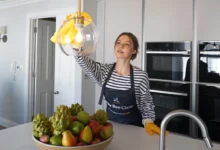Mastering the Charcoal Grill Tips and Techniques for Perfect BBQ

Introduction to Charcoal Grilling
Charcoal grilling is a cherished tradition among barbecue enthusiasts. It adds a distinct, smoky flavor to foods that are hard to replicate with other cooking methods. The aroma of charcoal and the sear marks it leaves on grilled fare capture the essence of outdoor cooking at its finest. Naturally, mastering the art of charcoal grilling requires understanding its fundamental components and techniques.
Charcoal grills come in various designs, each offering distinctive advantages. The kettle grill, with its round shape and adjustable vents, is renowned for its versatility and ease of use. Barrel grills, characterized by their cylindrical body, provide ample space, making them ideal for smoking and grilling large quantities. Meanwhile, ceramic grills are lauded for their exceptional heat retention and efficiency, lending themselves well to high-heat searing and slow cooking.
The key to successful charcoal grilling is grasping the essential components and tools required for the job. A chimney starter is indispensable for lighting charcoal evenly without the need for lighter fluid, ensuring a cleaner start. An accurate thermometer is critical for monitoring grill temperature, while sturdy tongs allow for safe and precise food handling. Additional valuable items include grill brushes for cleaning, heat-resistant gloves, and a spray bottle filled with water for managing flare-ups.
Safety is paramount in charcoal grilling. Understanding the basic principles of working with charcoal can prevent accidents and improve the grilling experience. Ensure grill placement on a stable, heat-resistant surface, away from flammable materials. Always keep a fire extinguisher or bucket of water nearby, and never leave the grill unattended. Please familiarize yourself with proper procedures for extinguishing coals after use and dispose of ashes safely once they have thoroughly cooled.
In essence, charcoal grilling, with its intrinsic charm and culinary benefits, demands a blend of knowledge, appropriate tools, and diligent safety practices. Embracing these foundational aspects sets the stage for mastering the flames and achieving barbecued perfection.
Setting Up and Lighting Your Charcoal Grill
Setting up and lighting a charcoal grill effectively is the cornerstone of achieving that perfect BBQ flavor. To start, selecting the correct type of charcoal is crucial. There are two primary options: briquettes and lump charcoal. Briquettes are uniform in size and provide a consistent burn, making them ideal for extended cooking sessions. Lump charcoal, however, ignites quickly and burns at a higher temperature, making it suitable for quick grilling.
Once you have your charcoal, determine the amount you need based on the grilling task. For direct methods, which involve cooking food directly over the flames, using ample charcoal ensures high temperatures. A smaller, well-arranged pile will suffice for indirect methods, where food is cooked adjacent to the heat source.
To arrange the charcoal:
- Start by cleaning out any old ashes from previous grilling sessions.
- Distribute the charcoal evenly across the grill’s base for the direct method.
- For the indirect method, place the charcoal on one side, leaving the other side clear for indirect cooking.
This setup mimics an oven, providing versatility in grilling.
Lighting the charcoal is simplified with a chimney starter. Place crumpled newspaper or a lighter cube beneath the chimney and fill it with charcoal. Ignite the newspaper or lighter cube, and within 15-20 minutes, your charcoal will be fully lit with a light gray ash forming. Alternatively, lighter cubes and electric starters can be used, but avoid lighter fluid, which can impart an unpleasant taste to your food.
It’s crucial to wait until the charcoal has fully ashed over before placing your food on the grill. This ensures an optimal cooking environment and avoids any flare-ups from unburnt charcoal. To maintain a consistent temperature, use the grill’s vents to manage the airflow. Opening the vents increases the heat while closing them slightly can lower the temperature, allowing for precise control throughout the grilling process.
Grilling Techniques and Tips
When mastering the charcoal grill, understanding the primary grilling techniques is crucial for achieving perfectly cooked food. Two fundamental techniques to familiarize yourself with are direct and indirect grilling. Direct grilling involves placing the food directly over the heat source, ideal for quickly cooking more minor cuts of meat like steaks, burgers, and vegetables. In contrast, indirect grilling is used for more significant cuts of meat, such as whole chickens or ribs, where the food is placed away from the heat source, allowing it to cook slowly and evenly.
To effectively utilize these techniques, it’s essential to manage grill zones. Creating two zones on your grill—direct heat and indirect heat—allows you to sear foods at high temperatures and then move them to a more relaxed area to finish cooking. Controlling airflow is another critical aspect of temperature management. Adjust the vents to allow more oxygen, which increases the temperature or restricts airflow to lower the heat. A properly maintained fire will provide consistent cooking conditions.
One of the iconic aspects of grilling is achieving those perfect grill marks. To do this:
- Ensure your grill grates are thoroughly cleaned and preheated.
- When placing the food on the grill, do so at an angle to the grates and avoid moving it too soon.
- Allow the food to sear undisturbed before rotating it 90 degrees for the crosshatch effect.
Wood chips and other flavor enhancers can enhance the flavor of your grilled food. Wood chips like hickory, apple, or mesquite can infuse your food with distinctive smoky flavors. Soak the wood chips in water for at least 30 minutes before putting them in the fire to prolong their burn time and amplify the flavor.
Timing, flipping, and resting are crucial components of grilling. For perfectly cooked meat, use a meat thermometer to check for doneness, avoiding excessive flipping, which can cause juices to be lost. Allow the meat to rest after being removed from the grill for a few minutes to let the juices redistribute, resulting in a more flavorful and tender dish.
Handling delicate items such as fish and vegetables requires specific attention. Use a grill basket to prevent smaller items from falling through the grates, and consider wrapping fish in foil or placing it on a cedar plank to preserve its structure and enhance the flavor. By adhering to these techniques and tips, you can achieve grilling excellence and savor the perfect BBQ experience.
Cleaning and Maintaining Your Charcoal Grill
Clean and maintain your charcoal grill regularly to preserve its longevity and best performance. After each use, Remove ash and debris to avoid buildup that can obstruct airflow and affect the grill’s efficiency. Once the grill has cooled completely, use a grill brush or scraper to clean the grates thoroughly, eliminating any leftover food particles and residue that can cause rust over time. Depositing the ash in a metal container with a lid helps contain potential fire hazards.
Deep-cleaning the grill periodically will help remove stubborn grease and carbonized buildup on the grill grates. Detach the grates and Soak them in a mixture of hot water and dish soap for about 20 minutes. Using a sponge or a heavy-duty grill brush, scrub away the residue. Mixing baking soda and water is put to the grates to remove stubborn, burnt-on food, which can work wonders. Rinse and dry the grates well to avoid rust formation.
Addressing the stationary parts of the grill, such as the interior and exterior surfaces, is equally important. Wipe the interior with warm, soapy water, paying particular attention to the lid, which often accumulates a greasy buildup. Rinse and dry it thoroughly before covering it again. For the exterior, especially if it is made of stainless steel, use a non-abrasive cleaner to avoid scratches.
Routine inspections and maintenance checks will help keep your charcoal grill in top condition. Regularly examine and tighten all screws and bolts, and examine parts for signs of wear and tear. When warped or cracked, replacing parts like the charcoal grate ensures safe and efficient grilling.
Proper storage is crucial when your grill is not in use. Invest in a high-quality grill cover to protect it from rain, snow, and excessive sun exposure. Consider storing the grill in a sheltered area to provide additional protection against the weather.
Investing time in adequately maintaining your charcoal grill will reap the benefits of hassle-free and enjoyable grilling sessions. Consistent care ensures the grill remains in prime working condition, providing delicious BBQ for years.



